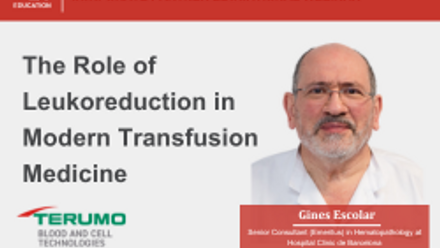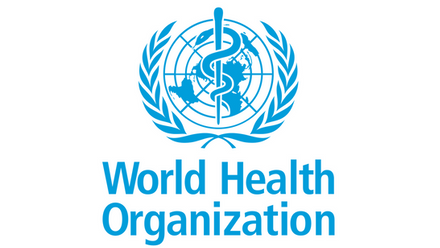The Platelets.... but not as we know them session included the following presentations:
1. Denese Marks: New Platelet Products (Cold stored, cryopreserved, thrombosomes)
2. Johanna Kirschall: Inhibition of cold-induced apoptosis of platelet concentrates better maintains platelet functionality and survival
3. Mohammad Reza Deyhim: The effect of N-acethyl cysteine (NAC) on expression of apoptotic and antiapoptotic microRNAs in platelet concentrates during storage
4. Lucia Merolle: Membrane Molecular Changes Associated with Platelet Cryopreservation
5. Kristina Ehn: Cryopreserved platelets in a novel non-toxic DMSO-free setting maintain hemostatic function in vitro
MODERATORS: Sandra Pettersson and Stephen Thomas
After the presentation, there was a questions and answers session, which is also included in the recording.
Abstract
Cryopreserved platelets in a novel non-toxic DMSO-free setting maintain haemostatic function in vitro
K Ehn1,2, A Wikman1,2, M Uhlin1,2, P Sandgren1,2
1Clinical Immunology and Transfusion Medicine (KITM), Karolinska University Hospital, 2Clinical Science, Intervention and Technology (CLINTEC), Karolinska Institute, Stockholm, Sweden
Background: Cryopreserved platelets (CPs) that can be stored for several years may be important in the management of bleeding in remote hospitals and in preparedness plans. The original method containing dimethyl sulfoxide (DMSO, Me2SO) as a cryoprotectant agent (CPA) was developed in the 1970s and has become the standard routine for platelet cryopreservation. Various alternative CPAs have been tested without greater success including propane-1,2-diol, glycerol cocktails with hydroxyethyl starch and dextran, trehalose or trehalose combined with phosphate, along with other mixtures containing a second messenger like ThromboSol1 or epinephrine.
Aims: The aim of this study was to evaluate hypertonic saline as a non-toxic medium for cryopreservation of platelets, on in vitro parameters.
Methods: In a paired study design, double-dose buffy coat platelets were divided into Reference (n = 10) and TEST (n = 10). A mixture of 25% DMSO/NaCl (50 mL) was added to the Reference platelet concentrates, while DMSO was excluded and 100 mL NaCl (9 mg per mL) was added to TEST units. The final volume in each freezing bag was approximately 10 mL platelet suspension, with 5% DMSO in the Reference group. Both units were immediately frozen at −80°C, stored for 2–4 months and thereafter thawed and reconstituted in compatible fresh plasma to a total volume of 200 mL. Analyses, including cell count, metabolic, phenotypic, and functional properties of the platelets and viscoelastography to assess the haemostatic function of the final product, were done pre-freezing and 1 h after thawing.
Results: After thawing, all CPs showed several biochemical and ultra-structural changes as compared to the pre-freezing data. In DMSO-free units platelet recovery was 87.4% ± 8.6%. This was significantly better (p < 0.001) compared to cryopreservation with DMSO (recovery 69.6% ± 6.1%). Minor differences in metabolic and phenotypic parameters were found, but all were within acceptable values. With exception of glycoprotein Ib, IIIa, VI and PECAM-1 (p < 0.01), no significant differences were found in the phenotypic comparison between the DMSO-free group and conventional DMSO freezing. Thus, no significant difference in activation level or in the response to various agonists were observed. The mitochondrial membrane potential was significantly reduced (p < 0.001) in DMSO-free products compared to DMSO (JC-1+ 35.3% ± 8.5% vs. JC-1+ 61.2% ± 11.9%). However, in a new set of experiments using controlled freezing equipment (n = 6), the platelet viability was on average 16.3% ± 5.8% higher (p < 0.001). DMSO-free platelets showed no significant differences in haemostatic function regarding clot formation time (119.9 ± 24.6 vs. 168.8 ± 102.6, p = 0.175) and slight significance in clot firmness (28.0 ± 3.6 mm vs. 31.5 ± 3.5 mm, p = 0.034). By reducing the reconstituted plasma volume in the DMSO-free units resulted in 20.5 s (p = 0.031) faster clot formation time and 8.5 mm (p < 0.001) expansion in maximal clot firmness.
Summary/Conclusions: We have shown that platelets cryopreserved in hypertonic saline have high recovery and maintain haemostatic function in vitro. They display only minor differences compared to platelets frozen with DMSO, proposing a novel non-toxic freezing alternative. Controlled freezing equipment is required to optimise the product quality. A DMSO-free method may increase the use of cryopreserved platelets for transfusion.




















